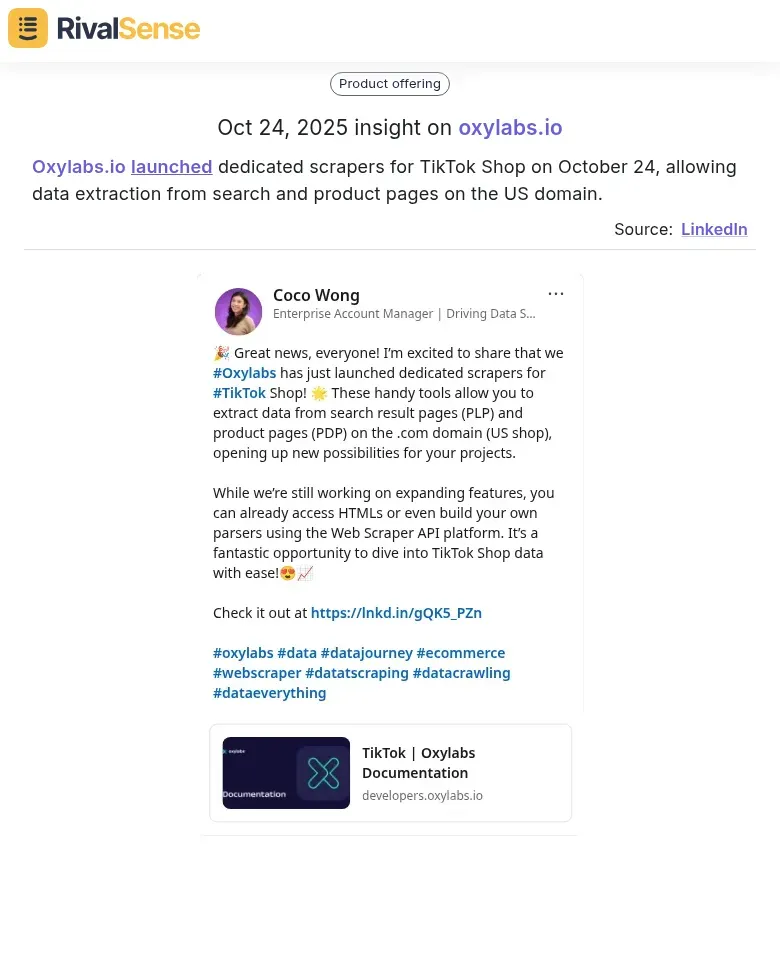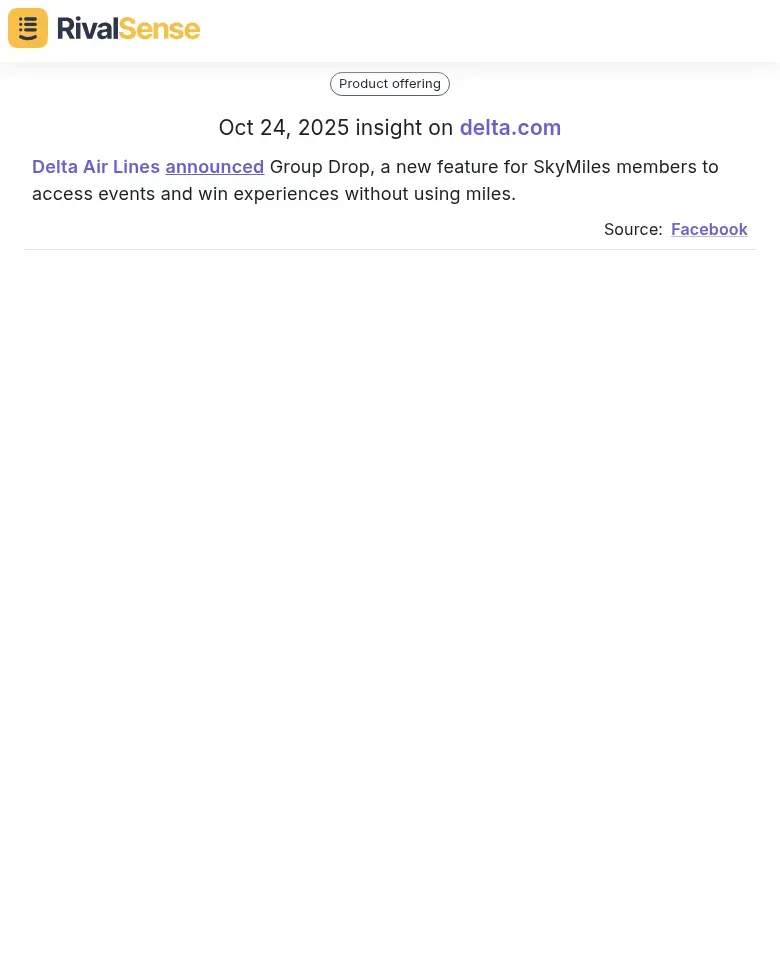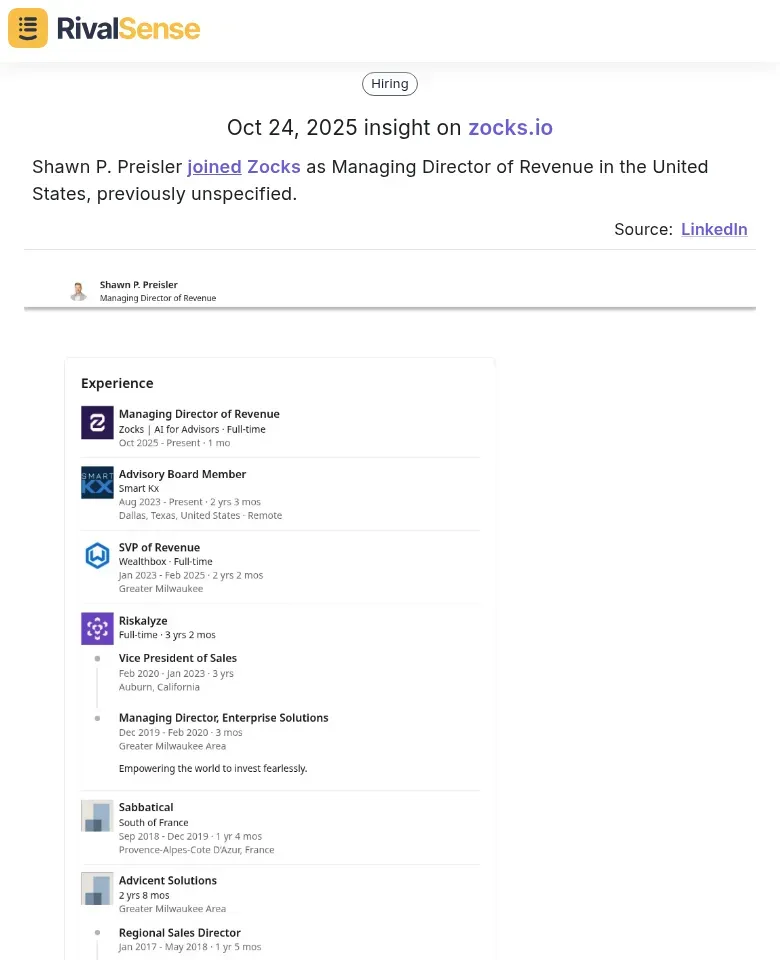Competitor Partnership Framework: SaaS Growth Templates
Competitor partnerships in SaaS are strategic alliances where rival companies collaborate to drive mutual growth. In today's competitive landscape, these collaborations can unlock new markets and innovation that solo efforts might miss. Benefits include accelerated market penetration, reduced operational expenses, and enhanced product offerings through combined expertise.
Common misconceptions and challenges:
- ❌ Fears of intellectual property theft or loss of competitive edge
- ❌ Aligning goals and managing cultural differences
- ❌ Ensuring equitable value distribution
Practical steps to get started:
- Identify complementary competitors
- Define shared objectives and KPIs
- Draft a partnership agreement covering IP and revenue sharing
- Establish regular communication channels
Tip: Start with small pilot projects to build trust, and focus on win-win outcomes to sustain long-term collaboration.
Leveraging Competitor Insights for Partnership Strategy
Staying informed about competitor activities is essential for making smart partnership decisions. Real-time insights can reveal opportunities and risks that might otherwise go unnoticed, helping you act proactively.
Product Launch Insight: Oxylabs.io TikTok Scraper

Oxylabs.io launched dedicated scrapers for TikTok Shop on October 24, allowing data extraction from search and product pages on the US domain. This type of insight is valuable because it reveals new product developments that could either compete with your offerings or present collaboration opportunities in adjacent markets, enabling you to adapt your partnership strategy accordingly.
Feature Update Insight: Delta Air Lines Group Drop

Delta Air Lines announced Group Drop, a new feature for SkyMiles members to access events and win experiences without using miles. Tracking feature updates helps you understand how competitors are enhancing customer experience, which can inspire similar innovations or partnerships to stay competitive and identify co-marketing potential.
Management Change Insight: Shawn P. Preisler at Zocks

Shawn P. Preisler joined Zocks as Managing Director of Revenue in the United States, previously unspecified. Management changes often signal strategic shifts; this insight is crucial for assessing a company's focus areas, such as revenue growth, which might make them more open to partnerships and help you time your outreach effectively.
Assessing Partnership Opportunities with Competitors
Evaluating potential partnerships with competitors requires a strategic approach to uncover mutual benefits. By analyzing complementary strengths and market alignment, you can pinpoint opportunities that drive growth and expand your reach.
Start by mapping your SaaS's core capabilities against competitors' offerings. For example, if you excel in analytics while a competitor dominates CRM integration, co-selling could create a complete solution for customers.
Evaluate market overlap by:
- Analyzing customer segments and geographic presence
- Using tools like RivalSense to reveal shared target audiences ripe for co-marketing
Critical risk assessment includes:
- Intellectual property protection in shared development
- Customer data privacy in integrated solutions
- Brand dilution from association
Practical checklist:
- ✅ Conduct SWOT analysis of both companies
- ✅ Map customer journey for combined offerings
- ✅ Establish legal framework for partnership agreements
- ✅ Define performance metrics for success tracking
Focus on partnerships that create 1+1=3 value, where combined market reach and capabilities exceed individual efforts.
Structuring the Partnership Agreement
A well-structured SaaS partnership agreement is crucial for sustainable growth. It sets clear expectations, minimizes risks, and aligns both parties toward common goals from the outset.
Start with defining the scope—what products/services are included, target markets, and partnership duration. Outline roles and responsibilities: who handles sales, marketing, support, and technical integration.
Revenue sharing models to consider:
| Model | Description | Best For |
|---|---|---|
| Percentage-based split | e.g., 20-80% for referrer-partner | Referral partnerships |
| Fixed fee per lead | Set amount for each qualified lead | Lead generation |
| Tiered structure | Based on performance tiers | Scalable partnerships |
Protect intellectual property by specifying ownership of pre-existing and jointly developed IP, and include confidentiality clauses. Data handling must comply with regulations like GDPR; define data access, usage limits, and security protocols.
Set clear KPIs and milestones:
- Monthly recurring revenue targets
- Customer acquisition numbers
- Onboard 50 customers in 6 months
Include exit strategies: termination clauses for underperformance, notice periods, and post-termination obligations (e.g., data return). Tip: Use a checklist to cover all components and regularly review agreements to adapt to market changes.
Implementing and Managing the Partnership
Launching a successful competitor partnership requires meticulous planning and ongoing management. Effective implementation ensures seamless collaboration and maximizes the partnership's potential from day one.
Start with technical integration: use APIs or middleware to sync data between platforms, ensuring a smooth user experience. Establish clear communication channels—Slack for daily updates, monthly strategy calls, and shared documents for goals and progress.
Ongoing management tools and practices:
- Use Trello or Asana for task management
- Leverage Google Analytics for tracking shared KPIs like lead generation
- Set up a dashboard to monitor performance metrics
- Hold quarterly business reviews to stay agile
Conflicts are inevitable; address them proactively with a conflict resolution protocol—escalate issues through designated points of contact and focus on mutual benefits. Maintain trust through transparency: share successes and challenges openly.
Adaptation tips:
- Hold biannual strategy sessions to pivot goals
- Create a partnership charter outlining roles and exit clauses
- Train teams with joint workshops to align on processes
Measuring Success and Scaling the Partnership
Measuring partnership success is essential to validate efforts and guide future scaling. By tracking key metrics, you can demonstrate ROI and make data-driven decisions for expansion.
Focus on metrics like revenue growth (direct and influenced), customer acquisition (new logos and co-marketing leads), and market share (competitive displacement). Use dashboards to monitor these weekly and adjust strategies as needed.
Scaling strategies:
- Start with joint product integrations
- Expand to co-branded content and shared sales enablement
- Create a partnership playbook documenting processes and success stories
Learn from failures:
- Conduct post-mortems on underperforming partnerships
- Identify misaligned goals, poor communication, or resource gaps
- Iterate by testing new partnership models (e.g., channel vs. technology alliances)
Practical tip: Implement a quarterly partnership review with stakeholders to assess ROI and refine approaches based on insights.
Ready to gain actionable competitor insights? Try RivalSense for free at https://rivalsense.co/ and get your first competitor report today to enhance your partnership strategies!
📚 Read more
👉 How JAL's Museum Expansion Uncovered Competitor Growth Strategies
👉 Instagram Competitor Insights: Data-Driven Key Account Growth
👉 Key Account Growth: Identity Verification Case Study Success
👉 Master Competitor Pricing Insights to Boost Account Health
